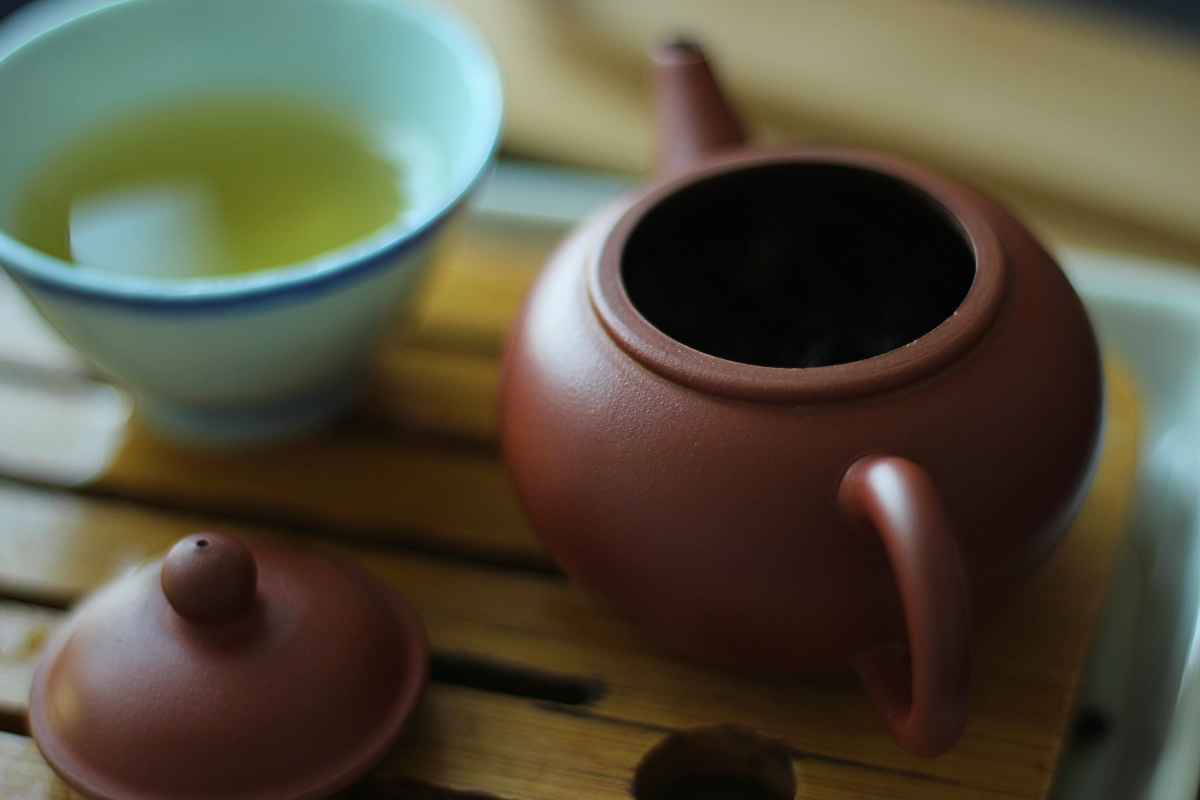I’m always on the lookout to try new teas and this is what happened a few days ago. I received another subscription box from Curious Tea and there was an oolong tea from Thailand included in this box. I have never tried a tea from Thailand before so there is a first for everything! Want to read more about the other teas from this subscription box? Click this link!
Santikhiri Four Seasons Oolong
As I have said before, this tea is an oolong tea from Thailand. It is grown in Santikhiri (formerly known as Doi Mae Salong) in Northern Thailand at an altitude of around 1,200 – 1,600m above sea level. This tea classifies as a high mountain oolong because of that. Around 40 years ago, this area was the centre for illegal opium trade but this changed in the 1980s. A lot of farmers switched to farming tea and Santikhiri quickly became the centre of the tea industry in this region.
The tea is made from the ‘Four Seasons’ cultivar (variety of the tea plant), hence its name. This is a Taiwanese cultivar that is a popular choice for lighter and floral oolongs. There is, however, a difference when you compare low altitude Four Season teas from Taiwan with high mountain teas from Thailand. The low altitude oolong teas have a more floral flavour profile while the high mountain oolongs from Thailand also highlight some of the more complex verdant (green) and citrus flavours. One could say that it adds a certain complexity to the tea. It classifies as an oolong tea but it is only lightly oxidised, which results in some fresh and green flavours. The finish and aftertaste are supposed to be fresh and is expected to resemble orange peel.
This tea classifies as a ball rolled oolong tea. The leaves are massive tightly rolled balls that have a darker green colour. It’s a combination of rolled leaves and some stems as well. I was surprised by the weight of these leaves. I used 5 grams but it looks a lot less on the picture.
After infusing, the leaves have unfurled and have a brighter green colour. This tea is a lightly oxidised oolong and this is clearly visible in the colour of the leaves. You can also see some stems in there.
Tea Tasting
- Water 90°C
- 5g of leaves for a 100ml Chaozhou teapot
- 1 rinse
- 6 steeps (15 sec + 5 sec for each steep)
Smell dry leaves
A very deep floral smell that has some light green notes to it.
Smell wet leaves
The floral notes are a lot lighter and you can also smell some green notes. This is almost like Spring in your teapot.
Steeping
1st steep: gentle floral notes and some very light green flavours as well. These green flavours are not dominant but it adds a certain depth and complexity to this steep. No aftertaste.
2nd steep: the floral character of the tea starts to appear now. Pleasant floral notes with a green finish. It’s not straight up floral notes but it has a certain complexity in the finish. The aftertaste is a bit floral.
3rd steep: it starts with floral notes again but there is a radical change of flavour in the middle. It almost becomes a green tea in the middle. The finish and aftertaste also resemble green tea. It’s mainly vegetal notes.
4th steep: less floral notes and this steep is mainly dominated by vegetal and green flavours. Some floral notes at the start but this quickly changes to green flavours and even some citrus notes. The aftertaste is vegetal and citrusy. It’s a very complex steep that is a bit astringent as well.
5th steep: the initial taste of this steep consists of delicious flowers but quickly fades away. Green and vegetal flavours in the middle but strangely enough, the floral notes are back for a floral finish. The aftertaste is floral as well. Also a bit astringent.
6th steep: very sweet and floral flavour. The aftertaste is very light and there is some astringency as well.
Conclusion
This is a pleasant and interesting tea. It’s not straight up floral but there are some green notes as well. This adds to the complexity of this tea. Huge difference in taste between the steeps. You can clearly taste that this tea is made from the Four Seasons cultivar but there is a whole other complexity to it. The combination of these flavours makes this a delicious and interesting tea.
I did some additional steeps without taking detailed notes. It’s just more floral flavours. After 8 steeps, I was still getting pleasant flavours. This tea will keep you company for a while!
If you want to buy this complex tea, visit Curious Tea’s store.




